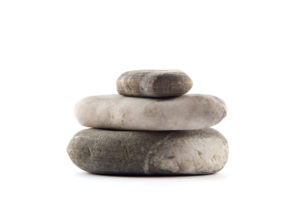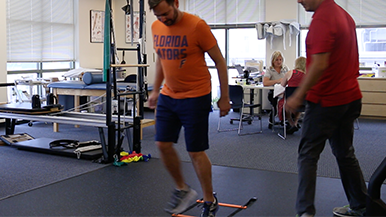What is a Vestibular System Disturbance?

Getting out of bed without stumbling, walking across an uneven surface, transitioning from walking on grass to the sidewalk are easy for most people… unless they have an impaired balance.
The vestibular system, which helps control balance and eye movements can become damaged by injury, disease or aging. When it’s damaged, it can cause vertigo, dizziness, imbalance and other problems.
To help retrain the brain’s ability to compensate for imbalances, a patient can undergo what’s known as vestibular rehabilitation therapy.
What is a vestibular system disturbance?
The vestibular system is composed of the inner ear and brain and it helps control balance and eye movement. It detects the position and motion of the head, helps the body stay upright when standing and helps determine where the body is in relation to gravity. When the vestibular organs on both sides of the head work properly, they send symmetrical impulses to the brain.
When the vestibular system becomes damaged, it can cause dizziness and instability. Damage can occur as a result of:
- Injury
- Disease
- Infection
- Aging
- Blood circulation disorders
- Arthritis
- Eye muscle imbalance
What are symptoms of a vestibular system disturbance?
When there is a vestibular system disturbance, a patient may experience various systems depending on the severity of the injury. Sometimes, a patient may not experience all of the symptoms or may not experience obvious or severe symptoms.
Symptoms of a vestibular system disturbance include:
- Vertigo, which can be associated with the illusion that a person or the world is moving
- Dizziness
- Imbalance
- Stumbling
- Spatial disorientation
- Hearing changes
- Vision disturbance
- Nausea
- Motion sickness
- Headaches
What are treatment options for a vestibular system disturbance?
When a patient experiences a vestibular system disturbance, treatment will be determined based on the patient’s symptoms, medical history and diagnostic test results. In addition to treating underlying diseases that may be contributing to the disturbance, treatment may include dietary adjustments, counseling, medication and surgery.
Another treatment option available is vestibular rehabilitation therapy (VRT). This exercise-based program helps the brain compensate for the imbalance because after an injury the brain can’t rely on the vestibular system for accurate information.
During VRT, a physical therapist or occupational therapist will first perform an evaluation and create an individualized treatment plan from the results. The plan can include specific head, body and eye exercises that are designed to retrain the brain to recognize and process signals from the vestibular system.
When a patient first starts VRT, some of the exercise activities may cause an increase in symptoms, but patients shouldn’t be discouraged. If the exercises are performed correctly and diligently, balance will improve. Oftentimes, VRT is so successful that no other treatment is required.



